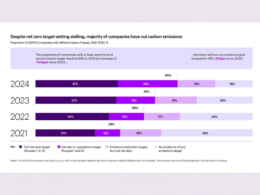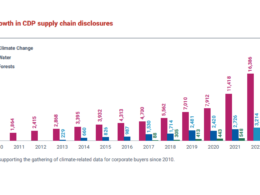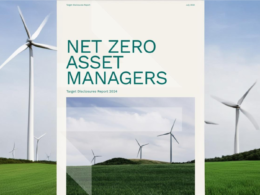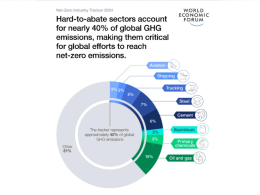In today’s corporate world, diversity is a buzzword we often hear, a term that’s supposed to symbolise inclusion, opportunity, and a broader sense of community within organisations. Companies all around the globe proudly advertise their diversity initiatives, showcasing their commitment to building a workforce that mirrors the myriad backgrounds, experiences, and perspectives that exist outside their office doors. From hiring practices to policies aimed at fostering inclusive cultures, the diversity movement has made significant strides in the past decade.
However, there’s an interesting paradox emerging alongside these initiatives. For all the talk about embracing diversity, many organisations are finding themselves moving toward an unexpected direction: uniformity. There’s a tendency within some corporate diversity initiatives to standardise or homogenise employees, inadvertently creating a kind of “cookie-cutter” model of what it means to be diverse. It sounds like a contradiction—how can diversity lead to uniformity? Let’s take a deep dive into this fascinating phenomenon and explore how and why this paradox occurs.
Before we delve into the paradox, it’s important to understand why diversity became a focal point in corporate environments. Over the last few decades, businesses have increasingly recognised that diversity isn’t just a moral imperative; it’s also a business advantage. Research has shown that diverse teams are more innovative, better at problem-solving, and often outperform homogeneous groups in various metrics. As a result, corporate diversity initiatives became a priority for many organisations, who were eager to create workplaces that represented a broad range of voices and perspectives.
Some of these initiatives focused on gender, others on race, ethnicity, sexual orientation, and even socioeconomic background. These efforts usually came in the form of diversity quotas, employee resource groups, diversity training programmes, mentorships, and the implementation of hiring practices designed to give underrepresented groups an equal chance at career advancement. On paper, the goal was clear: to break down barriers and create workplaces where everyone, regardless of their background, could thrive. But despite the best of intentions, some unintended consequences began to emerge.
The paradox begins to unfold when we look more closely at how these diversity initiatives are implemented. While organisations claim to be promoting inclusion and celebrating individual differences, the drive for diversity often leads to an emphasis on “fitting in” rather than embracing individuality. In other words, diversity programmes sometimes evolve into an expectation that employees must adopt certain behaviours, attitudes, or identities that align with the company’s diversity goals, even if it means suppressing or standardising their unique characteristics.
Take diversity training programmes, for instance. These sessions, which are supposed to foster inclusivity and understanding, can sometimes end up focusing more on compliance and reducing “differences” rather than celebrating them. Employees may feel pressure to conform to a set of behaviours or attitudes that are considered “acceptable” within the organisation. The paradoxical result is that employees may feel like they need to fit into a mold, which defeats the purpose of the initiative in the first place. Instead of diverse, unique individuals contributing their authentic selves, you may end up with a uniform set of behaviours and attitudes that all fall within a narrow band of what’s considered acceptable diversity.
Another way homogenisation creeps into corporate diversity initiatives is through the rise of what could be called the “diversity checklist.” Companies are now frequently reporting their diversity statistics, showcasing their progress in hiring women, people of colour, LGBTQ+ individuals, and other minority groups. While transparency is important, this checklist approach to diversity can lead to the simplification of what it means to be diverse. When diversity becomes a set of metrics to meet, it can shift the focus away from genuine inclusion toward just hitting numbers.
Think about how some companies advertise their “50% women” or “40% people of colour” representation. While these numbers sound great on paper, they don’t capture the nuance of what it means to create an inclusive culture. If a company focuses solely on quotas, it might end up hiring diverse employees but not offering them an environment where they can truly thrive, express their individuality, or influence the culture. This can lead to a situation where the workforce is technically diverse in terms of race, gender, or background, but lacks the deep diversity of thought, experience, and perspective that the term is supposed to signify.
Furthermore, employees may find themselves pigeonholed into certain roles or expected to represent a “type” within the organisation based on their identity, further contributing to a feeling of uniformity. The idea is that diversity isn’t just about meeting a quota—it’s about creating an environment where people feel valued for their unique perspectives and experiences.
One of the biggest challenges in today’s corporate diversity initiatives is balancing the diversity of thought and experience with the desire for a cohesive, uniform corporate culture. Many companies tout the importance of hiring people with different viewpoints, but once they’re hired, they may encounter a culture that demands they adapt to a singular set of norms and behaviours. This creates a tension between diversity in identity and diversity in perspective.
For example, companies that value “collaboration” may expect all employees to work in a very specific way, leaving little room for different approaches to problem-solving. This can discourage employees from expressing unconventional viewpoints, which are often the hallmark of diverse thinking. Instead of fostering an environment where different approaches to work are celebrated, these companies may inadvertently enforce a culture that demands uniformity.
The desire to standardise certain practices—whether it’s communication styles, working hours, or even the way people present themselves in meetings—can lead to a stifling of individuality. If employees are expected to conform to a particular set of behaviours to be deemed successful or to “fit in,” then the diversity of thought that the company initially hoped to cultivate can quickly be diminished.
Another form of homogenisation within diversity initiatives is tokenism. In an effort to appear diverse, companies sometimes hire individuals from underrepresented groups without truly integrating them into the organisation. These individuals might feel like they’re being seen as symbols of diversity rather than valued contributors to the company’s success.
Tokenism can lead to a situation where the diversity of an organisation is more about checking boxes than about fostering an inclusive and dynamic workplace culture. Employees who feel tokenised may struggle to express themselves freely or may feel pressure to represent their entire community, which can lead to burnout or disengagement. This creates a false sense of diversity that can be harmful in the long run. It’s not just about having diverse people in the room; it’s about creating an environment where those people can thrive without feeling the weight of being the “diversity representative.”
An unfortunate side effect of corporate diversity initiatives is the fear that employees have of standing out too much. When a company makes diversity a priority, employees from underrepresented groups may feel that their differences should be celebrated, but they also worry about being viewed as “too different.” They may fear being marginalised or overlooked if their individuality doesn’t align with the company’s expectations for what diversity looks like.
This fear of standing out can lead employees to suppress aspects of their identities or experiences, opting instead to blend in with the corporate culture. The result is a workforce that is more diverse on paper but less diverse in practice, as employees may feel pressured to conform to an idealised version of diversity rather than expressing their authentic selves.
It’s clear that the paradox of homogenisation in corporate diversity initiatives presents a significant challenge. So, what can companies do to avoid falling into this trap?
- Shift Focus from Metrics to Culture: Rather than focusing solely on diversity quotas, organisations should shift their focus to creating an inclusive culture where all employees, regardless of their background, feel free to contribute their authentic selves. True diversity doesn’t just mean meeting numerical targets—it means fostering an environment that encourages individuals to bring their unique perspectives to the table.
- Embrace Diverse Communication Styles and Work Habits: Companies should encourage flexibility in how employees communicate and collaborate. By accepting a range of working styles, from introverted approaches to extroverted ones, companies can create an environment where employees don’t feel forced to fit a mold.
- Provide Space for Individuality: Beyond ensuring diversity in hiring, companies should offer platforms where employees can express their identities, share their stories, and influence the workplace culture. This might mean providing opportunities for mentorship, employee resource groups, or simply creating spaces where diverse voices can be heard.
- Listen and Learn: Corporate diversity initiatives should not be one-size-fits-all. It’s essential for companies to continually gather feedback from employees to understand how they experience the culture and where improvements can be made. Listening to employees and taking their concerns seriously is a key component of creating a truly diverse and inclusive workplace.
The paradox of homogenisation in corporate diversity initiatives serves as a powerful reminder that diversity is not just about hiring a range of people from different backgrounds; it’s about creating an environment that values and nurtures their unique contributions. While it’s easy to get caught up in the numbers and metrics, true diversity requires ongoing effort to build a culture of inclusivity where individuality is celebrated.
As companies continue to invest in diversity initiatives, it’s crucial that they keep this balance in mind. Only by focusing on the richness of diversity—whether in thought, experience, or identity—can organisations truly create workplaces that are innovative, inclusive, and successful in the long term. It’s a delicate dance, but it’s one that can yield tremendous rewards when done right.
By embracing diversity not just in appearance but in action, companies can foster a culture where everyone feels truly valued—not for what they are expected to be, but for who they genuinely are.






















